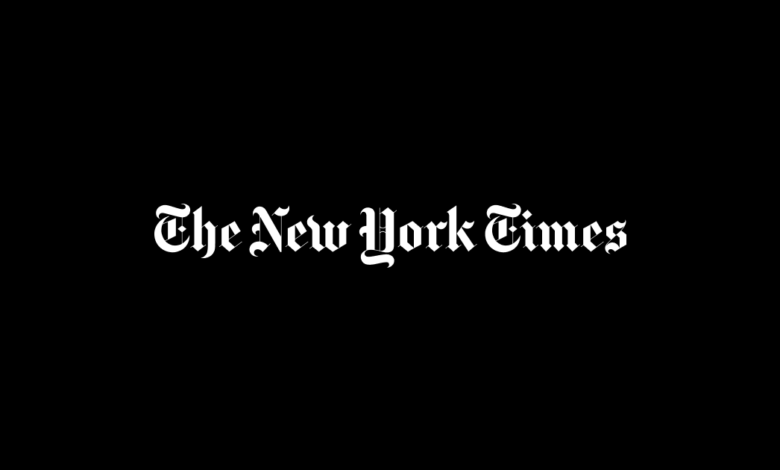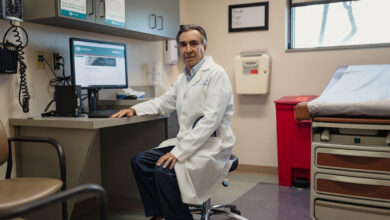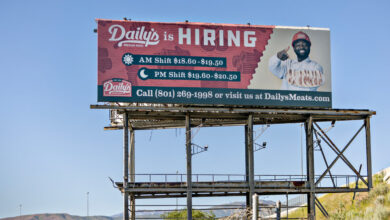What to Know About Today’s Fed Meeting on Interest Rates

Federal Reserve officials left interest rates unchanged and signaled that they are wary about how stubborn inflation is proving, paving the way for a longer period of high interest rates.
The Fed held borrowing costs steady at 5.33 percent on Wednesday, leaving them at a more than two-decade high where they have been set since July. Central bankers reiterated that they need “greater confidence” that inflation is coming down before reducing rates.
“Readings on inflation have come in above expectations,” Jerome H. Powell, the Fed chair, said at a news conference following the release of the central bank’s rate decision.
The Fed stands at a complicated economic juncture. After months of rapid cooling, inflation has proved surprisingly sticky in early 2024. The Fed’s preferred inflation index has made little progress since December, and although it is down sharply from its 2022 highs, it remains well above the Fed’s 2 percent goal — calling into question how soon and how much officials will be able to lower interest rates.
“What we’ve said is that we need to be more confident” that inflation is coming down sufficiently and sustainably, Mr. Powell said. “It appears that it’s going to take longer for us to reach that point of confidence.”
The Fed raised interest rates quickly between early 2022 and the summer of 2023, hoping to slow the economy by cooling demand. Higher Fed policy rates trickle through financial markets to push up mortgage, credit card and business loan rates, which can cool both consumption and company expansions over time.
But Fed policymakers stopped raising rates last year because inflation had begun to come down and the economy appeared to be cooling, making them confident that they had done enough. They had expected to make three interest rate cuts in 2024 as recently as March. Now, though, inflation’s recent staying power has made that look less likely.
Many economists have begun to push back their expectations for when rate reductions will begin, and investors now expect only one or two this year. Odds that the Fed will not cut rates at all this year have increased notably over the past month.
Mr. Powell made it clear on Wednesday that officials still think that their next policy move is likely to be a rate cut and said that further increases are “unlikely.” But he demurred when asked whether three reductions are likely in 2024.
Still, investors responded favorably to those comments: Stocks rose and bond yields fell as Mr. Powell was speaking.
A longer period of high Fed rates will be felt from Wall Street to Main Street. Key stock indexes fell in April as investors came to expect a longer stretch of elevated borrowing costs, and mortgage rates have crept back above 7 percent, making home buying pricier for many want-to-be owners.
But Fed officials are planning to keep rates high for a reason: They want to be sure to stamp out inflation fully to prevent quickly rising prices from becoming a more permanent part of America’s economy. Inflation has cooled sharply from its 2022 peak of 7.1 percent, but at 2.7 percent, it is still well above the Fed’s 2 percent goal.
Policymakers are closely watching how inflation data shape up as they try to figure out their next steps. Economists still expect that price increases will start to slow down again in the months to come, in particular as rent increases fade from key price measures.
“My expectation is that we will, over the course of this year, see inflation move back down,” Mr. Powell said on Wednesday. But he added that “my confidence in that is lower than it was because of the data that we’ve seen.”
As the Fed tries to assess the outlook, officials are likely to also keep an eye on momentum in broader economy.
Economists generally think that when the economy is hot — when companies are hiring a lot, consumers are spending and growth is rapid — prices tend to increase more quickly. Companies are more likely to raise wages as they compete for workers, and they will try to raise prices to cover their climbing labor costs. Consumers who are earning more are less likely to balk at heftier price tags.
Growth and hiring have not slowed down as much as one might have expected given today’s high interest rates. A key measure of wages climbed more rapidly than expected this week, and economists are now closely watching a jobs report scheduled for release on Friday for any hint that hiring remains robust.
But so far, policymakers have generally been comfortable with the economy’s resilience.
That is partly because growth has been driven by improving economic supply: Employers have been hiring as the labor pool grows, for instance, in part because immigration has been rapid.
Beyond that, there are hints that the economy is beginning to cool around the edges. Overall economic growth slowed in the first quarter, though that pullback came from big shifts in business inventories and international trade, which often swing wildly from one quarter to the next. Small-business confidence is low. Stock indexes fell in April. Job openings have come down substantially.
Mr. Powell said Wednesday that he thinks higher borrowing costs are weighing on the economy.
“I do think it’s clear that policy is restrictive,” he said. “We believe that over time it will be sufficiently restrictive.”
Mr. Powell also pushed back on the idea that the economy might be picking back up.
“What you see is economic activity at a level that’s roughly the same as last year,” Mr. Powell said.
Still, the combination of sticky inflation and continued growth gives the Fed both a reason to wait before making rate cuts and the ability to do so without running a big risk of tipping the economy into a recession.
As the Fed waits to make interest rate cuts, some economists have begun to warn that the central bank’s adjustments could collide with the political calendar.
Donald J. Trump, the former president and presumptive Republican nominee, has already suggested that interest rate cuts this year would be a political move meant to help President Biden’s re-election bid by goosing the economy. Some economists think that cutting in the weeks leading up to the election — either in September or November — could put the Fed in an uncomfortable position, drawing further ire and potentially making the institution look political.
The Fed is independent of the White House, and its officials have repeatedly said that they will not take politics into account when setting interest rates, but will rather be guided by the data.
Mr. Powell reiterated on Wednesday that the Fed does not and will not take into account political considerations in timing its rate moves.
“If you go down that road, where do you stop? So we’re not on that road,” Mr. Powell said. “It just isn’t part of our thinking.”
Fed officials also announced a plan on Wednesday to shrink their balance sheet of bond holdings more slowly. The Fed’s balance sheet exploded in size as the central bank snapped up securities during the pandemic, and officials have paring it down for months by allowing securities to mature without reinvesting the proceeds.
By making that process more gradual, officials hope that they will be able to reduce their footprint in financial markets without risking a market rupture. Officials had hinted that a balance sheet plan was coming.



